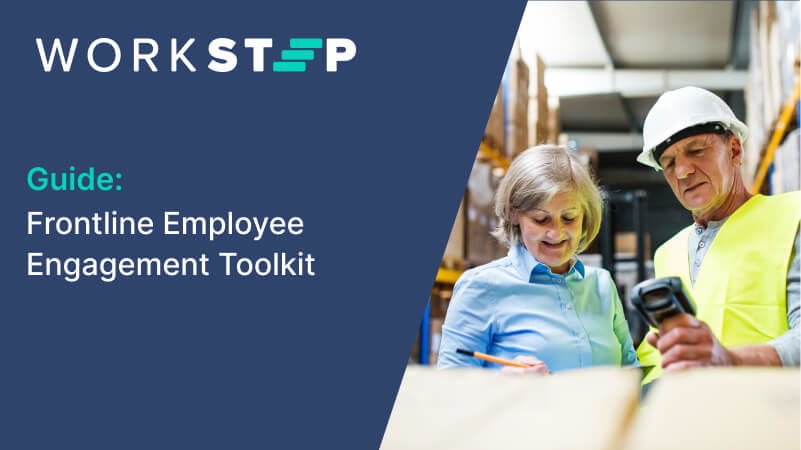Even without the newer challenges of hiring, the expense to recruit, onboard, and train is much more costly than keeping your current workforce. Sounds straightforward, right?
Well it can be if you have a solid retention strategy in place. But knowing how to build one that delivers positive outcomes can be challenging. There is some prep work that must be done to ensure your retention strategy will be executed successfully.
Here are five key steps to take in order to lay the foundation for a plan that will improve company morale, help employees feel valued and heard, and ultimately reduce turnover. Make sure your retention strategy is delivering positive outcomes. If you’re looking for a comprehensive solution to improve employee retention, consider WorkStep’s employee retention software that can help you streamline your efforts and achieve better results.
1. Create accountability for frontline managers
A retention strategy needs to include a plan to hold management accountable for their turnover rates. Without having every department or team invested in working towards this goal, organizational change that leads to better company brand reputation and lower churn will be difficult to achieve.
2. Determine your true cost of worker turnover
There are several calculations that go into determining the cost of a turnover event. Companies need to consider sourcing expenses, salaries, incentive pay, benefit costs, new hire efficiency – not just the wage of the termed employee.
Organizations often underestimate the cost of a frontline worker leaving. The average is around $12,876, but depending on the role and specifics of your business, the cost can exceed $45,000 per turnover event. Knowing the actual expense is important in accurately measuring your ROI once a retention strategy is implemented.
Luckily, WorkStep has developed a cost of turnover calculator to help you quickly and easily calculate your true cost. We also offer guides to help understand the inputs and the results.
3. Develop a communication plan
Employers often struggle to communicate with their frontline workers since they typically don’t have access to company emails or phones. Finding a platform that works to regularly communicate with all employees is a key part to a successful retention strategy. Without having a regular way to communicate company news, updated policies, or gather feedback, a workforce ends up feeling disconnected and not valued.
Most employees have a personal mobile phone, so this may be the best way to reach out. Human resources should make it a priority to ensure the company has everyone’s number on file.
4. Choose an employee engagement and listening tool
How do you plan to collect feedback from your frontline? This is the heart of a truly successful retention strategy. Without having a tool that allows you to engage with your employees to gather insights into what is driving their satisfaction or lack of, you’re just throwing things at the wall and hoping something sticks.
Finding a tool that allows you to regularly check in with your hourly workforce not only helps a company understand areas where improvements could be made, but also helps employees feel valued and heard. When they are able to send this feedback anonymously it often breeds more honest responses.
5. Plan how to act on employee feedback
Have you ever given feedback and not seen any change come from it? It usually makes you feel like you wasted your time and that the people asking for it don’t actually care about your input. Well, that’s exactly how employees feel when a check-in is sent but no action is taken.
Collecting the information is only half the battle. No one wins unless you have a plan to act on the feedback coming in. As you set out to create a retention strategy, consider what you would need in order to implement changes as an organization. Do you have the right people invested in making changes to reduce turnover? Do you have funds to allocate towards initiatives? These are questions you’ll want to answer before launching a retention strategy in order to be able to act quickly on employee feedback.
When choosing an employee feedback platform, it’s important to pick one that allows you to track the success of these changes. Being able to measure how an initiative impacts employee satisfaction will help a company know which to continue investing in.
Tune into your frontline with WorkStep
With the frontline employee engagement platform that delivers the real-time insights you need to take action, retain your workforce, and drive your business forward.
Kristina Finn, Content Marketing Manager | kristina@workstep.com



